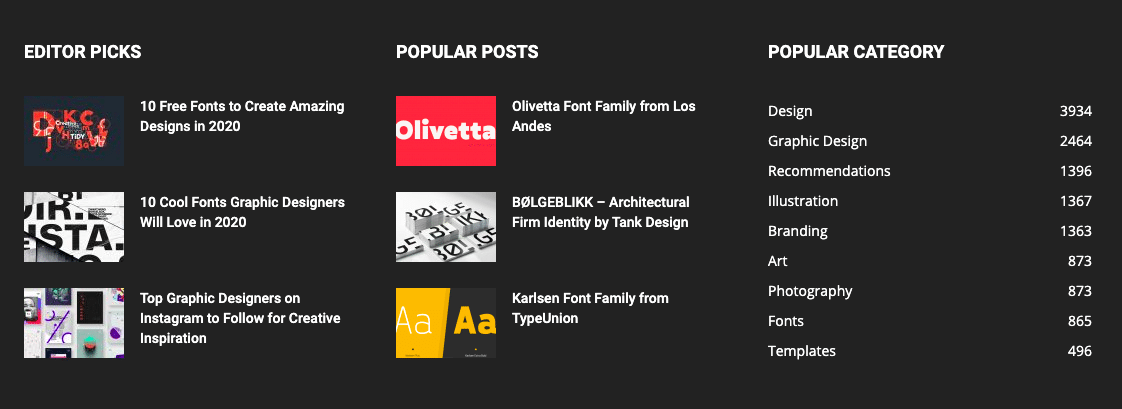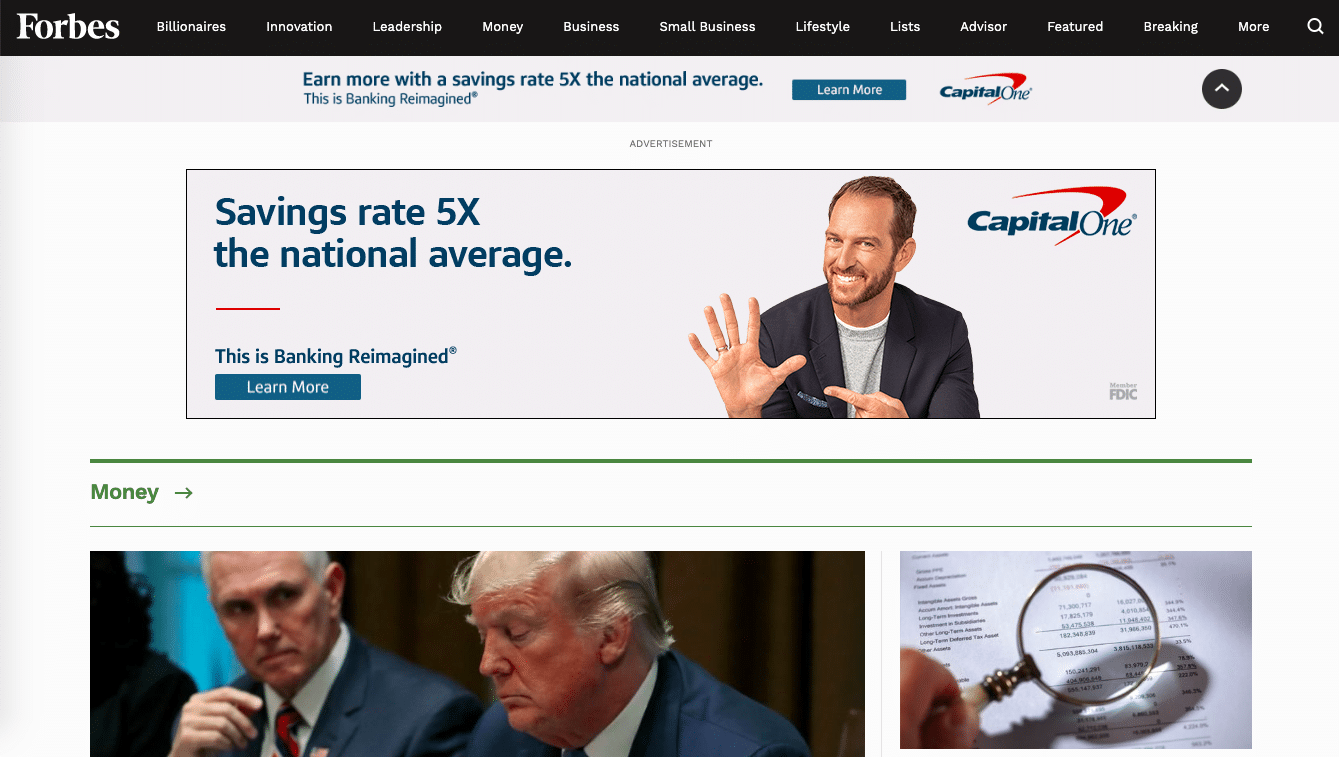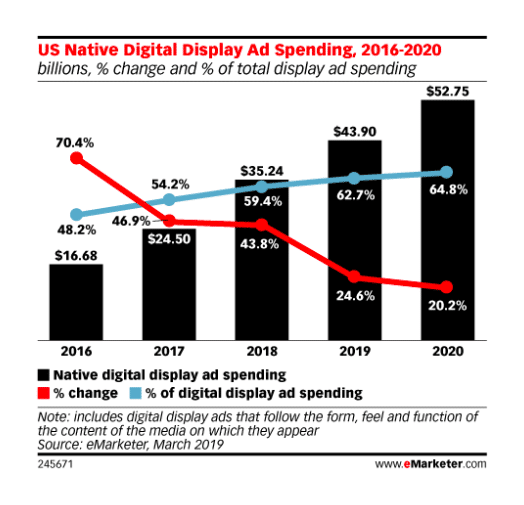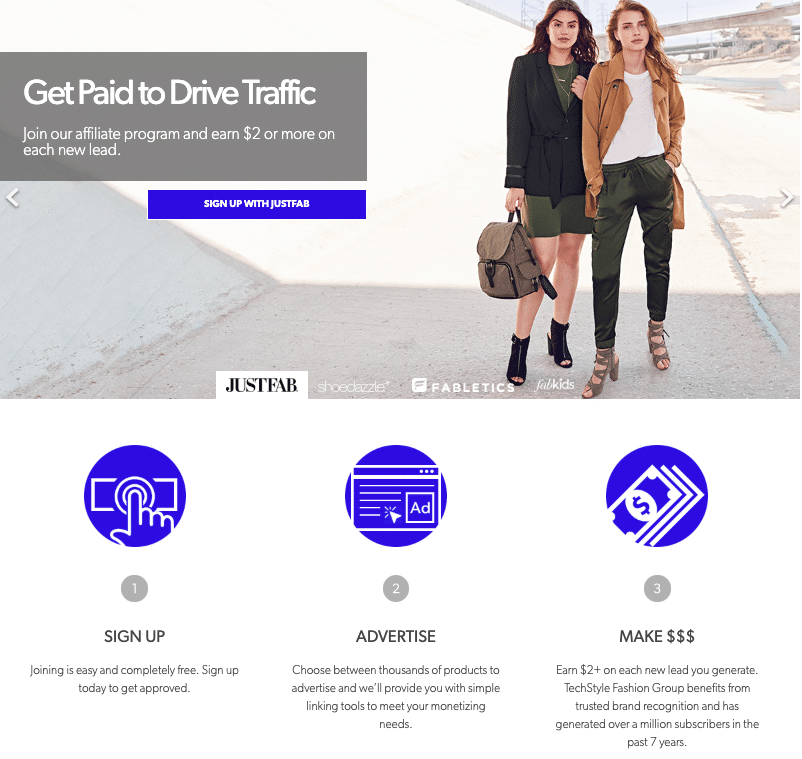Ready to begin selling ad space on your website, but not sure how to get started? This guide answers all your questions.
Many publishers struggle with how to monetize their websites and generate revenue from their blogs. Even when they’re creating high-quality content and driving traffic, they’re still left wondering: ‘How much do websites make from ads?‘ and ‘How can I prepare my ad space for sale?’
In this guide, we outline the requirements for selling ad space, and look at the top four ways publishers can sell advertising space on their websites.
What Is Ad Space?
Ad space is an area on a web page where an advertisement can be placed. Ad space is commonly present at the top and bottom of websites, as well as in the sidebars and sometimes in the middle of articles. The ads in these spaces take different forms, such as display ads, banner ads, video ads, text ads, and native ads.
Publishers will set aside ad space on their websites to help drive revenue from their visitors.
What Does it Mean to Sell Advertising Space?
Selling ad space involves designating blank or available sections of your website for ad hosting. These ads sell programmatically, through bidding processes, or directly to advertisers. They take many forms, such as banner ads, sponsored content, and videos.
Selling Ad Space Requirements
There are certain requirements online publishers should meet before they start selling space to advertisers:
Traffic
Publishers should have a sizable audience of visitors to be attractive to advertisers. The more page views you have, the more eyes advertisers get on their content. There is no overall traffic requirement for selling ad space on your website, but certain affiliate networks or ad platforms may have specific thresholds.
Quality Content
Your website must host original, high-quality content that keeps readers on the page and coming back for more. If you run a niche blog in your industry, for example, you might share expert knowledge, thought leadership, exclusive interviews, and unique personal experiences.
Take Ashleigh, founder of Sewrella.com, a niche blog for people who knit and crochet. She offers unique designs and a free crochet pattern series to build her audience of readers and subscribers.

According to Ashleigh’s latest income report, she earned over $7,800 from selling ads on her website.
Design and Functionality
A publisher’s website must be intuitive and easy to use, with a visible navigation bar and clear indicators of how to move between pages and access information.
Art and design blog, We and the Color, includes transparent navigational cues at the top, side, and bottom of its homepage, inviting visitors to explore new content that meets their interests.

Google AdSense also recommends including features that boost engagement, such as comments sections and eye-catching visuals.
Audience
A loyal audience is more valuable than a spike in traffic. Why? Because a loyal audience consistently engages with your content, while a one-off boost in numbers is fleeting.
Demonstrate that you have a dependable audience of readers who trust your content and recommendations and advertisers will be willing to buy space on your site.
How to Sell Ad Space Online on Your Website
Publishers have a range of options for selling ad space on their websites. After all, websites are dynamic digital properties that evolve to help drive revenue and deliver personalized experiences to readers.
Consider these four popular monetization strategies to start earning passive income from your growing audience.
1. Ad Networks
Ad networks are useful for publishers seeking guidance and regulation for their ad space selling.
What is an Ad Network?
Ad networks connect publishers and advertisers through a singular, managed platform. They are a convenient solution for website monetization and provide consistent, supervised ad content to publishers.
Capital One placed this ad on the Forbes homepage, for example, through an ad network:

Ad networks charge advertisers by cost per thousand impressions (CPM), cost per click (CPC), or cost per acquisition (CPA), and they commonly take a cut of each ad sale.
Why are Ad Networks Needed?
Ad networks connect the right advertisers with the right publishers, based on qualifications such as content type, audience size, and budget.
They may also screen participants and divide them into premium or top-tier categories for more accurate pricing and brand-safe placements.
How to Create an Ad Network
So as not to lose a portion of their revenue to a third-party ad network, publishers that have the time and resources can create their own ad networks. This involves setting up their own ad server and domain. They then have to recruit and screen advertisers, and monitor campaign performance.
2. Native Advertising
Native advertising involves selling ad space that fits intuitively within the content and design of the publisher’s website. Native ads take the form of sponsored articles, videos, or recommended content.
This New York Times article sponsored by Delta is native advertising:

And this recommended content provided by Taboola’s Discovery platform on Bloomberg.com is a form of native advertising:

Why is Native Advertising Important?
Native advertising is important because it reaches audiences with personalized ad content and does not disrupt the user experience.
As ad fatigue continues to affect consumers, brands are searching for new ways to engage readers and viewers. Publishers can offer these marketers native advertising opportunities, and drive revenue from their visitors.
Is Native Advertising Effective?
According to ad analysis from MediaRadar, native advertising is more trustworthy, engaging, and lucrative than other ad formats.
It also drives an 8.8x higher CTR than typical display ads. Perhaps that’s why U.S. advertisers are increasing their native ad spending — jumping from $35 billion in 2018 to $44 billion in 2019.

Taboola connects publishers with a robust network of high-quality advertisers to place native advertising on their sites. These sponsored video and recommended content units can live on the publisher homepage, mid-article, or below the article — reaching readers right when they’re ready to engage with something new.
Publishers can also control their ad experiences with keyword filters and precise targeting, to ensure visitors enjoy the most relevant content experiences.
3. Selling Ad Space Directly
Publishers that are still growing or don’t want to use an ad network can sell ad space on their website directly to brands.
How to Sell Ad Space Directly to Advertisers
To sell directly to advertisers, publishers must find brands in their industry who are willing to work with them. They can research similar blogs in their field to see which companies are buying website ads. They can also conduct cold calls and email campaigns to introduce themselves and make an offer.
What will get Advertisers on your Site?
Publishers can also drive advertisers to their websites by featuring certain products in organic posts, linking to the brand’s own website, and connecting with brand representatives on LinkedIn.
What do Advertisers Need to see When Selling Ads?
Publishers increase their chances of success by offering advertisers a media kit. This should include site analytics, such as page views and bounce rates; audience personas; social reach; rate cards for different ad types; and, even sample ads, so brands can see how their content will fit into your site.
Take this page from Fast Company’s digital media kit for inspiration:

4. Affiliate Marketing
With affiliate marketing, publishers advertise products on their websites in exchange for a commission. This is a common advertising strategy for influencers and bloggers.
For example, TechStyle Fashion Group, owner of fashion blogs and retail brands JustFab and Fabletics, runs its own affiliate network, offering publishers $2+ on each new lead generated:

How does Affiliate Marketing Work?
Publishers can market as affiliates through a range of ad formats, such as sponsored blog posts, videos, and display ads.
The ad is generally accompanied by a link and perhaps a promo code, inviting readers to click through to the brand’s product.
If they end up engaging with the ad or buying the product, the publisher receives a percentage of the sale.
Conclusion
Publishers have a valuable opportunity to generate revenue and earn passive income from their audiences by selling ads on their websites.
They can do this by signing up for ad networks, selling ads directly to brands, becoming affiliate marketers, and setting up native advertising partnerships.
Whichever strategies you choose, be sure to deliver high-quality content, functional design, and impressive audience engagement.
Give advertisers no choice but to join your team and start buying ad space.